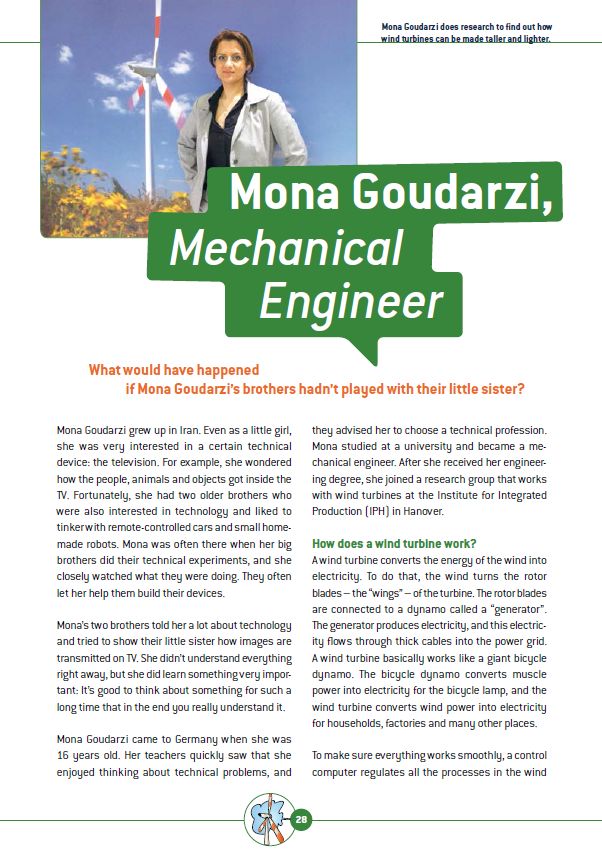Women in STEM

Overview
Girls and young women have great potential to excel in the STEM fields. In order to convince them of this and to get them excited about scientific subjects, they need positive role models: Women who successfully work in scientific professions, do research and thus prove it: STEM knows no gender.
We at Science on Stage offer teachers a small selection of teaching materials that focus on women researchers and their work. This way they can work on exciting topics and experiments and at the same time make the future of STEM more female!
You can download all materials free of charge below.
Even as a 4-year-old, Nadya Ben Bekhti knew that one day she would explore the stars. At first she wanted to be an astronaut, but then a visit to the planetarium awakened her passion for astronomy. Today, the physicist studies galaxies with the help of the largest telescopes in the world, which have the surface area of a football field. In this teaching unit she demonstrates among other things how to bring the starlit sky and the surface of the moon into the classroom using household items.
It’s sticky: wallpaper paste. But what is it made of and why does it jump like a ball if you squeeze it thightly and smash it to the ground even though it is a liquid?
Petra Mischnick is a chemist and does research on the ingredients of food: For example she investigates how glue can be won from cereals and potatoes. In ‘Lantern Moon and Hot Ears’ she presents simple experiments for primary students showing them how to investigate the characteristics of starch, e.g. the students mix cornflour with water and see what happens to the starch paste when it is at rest, stirred or squeezed.
Regina Palkovits is a chemical engineer and investigates how energy can be won from renewable raw materials. In this unit she introduces primary school students to the topics renewable energy, environment and fuels. In a simple experiment the students are making lamp oil from walnuts, learning about the interconnection between energy and fuels.
How do people, animals and objects get inside the TV and how do remote-controlled cars work? Since childhood technics were of tremendous interest to Mona Goudarzi. Today she is a mechanical engineer. In ‘Lantern Moon and Hot Ears’ she presents exciting questions and experiments on wind turbines for primary students and explains how wind is turned into energy.
Teaching Materials
Lantern Moon: Researching stars in primary school with astronomer Nadya Ben Bekhti
Download FileLantern Moon: Chemistry in primary school with Petra Mischnick and the wallpaper paste experiment
Download FileLantern Moon: Winning energy from renewable raw materials - simple experiments for primary school
Download FileLantern Moon: Doing research on wind turbines in primary school with simple experiments
Download FilePhone: +49 30 400067-42
Mail: press@science-on-stage.eu
Share this page